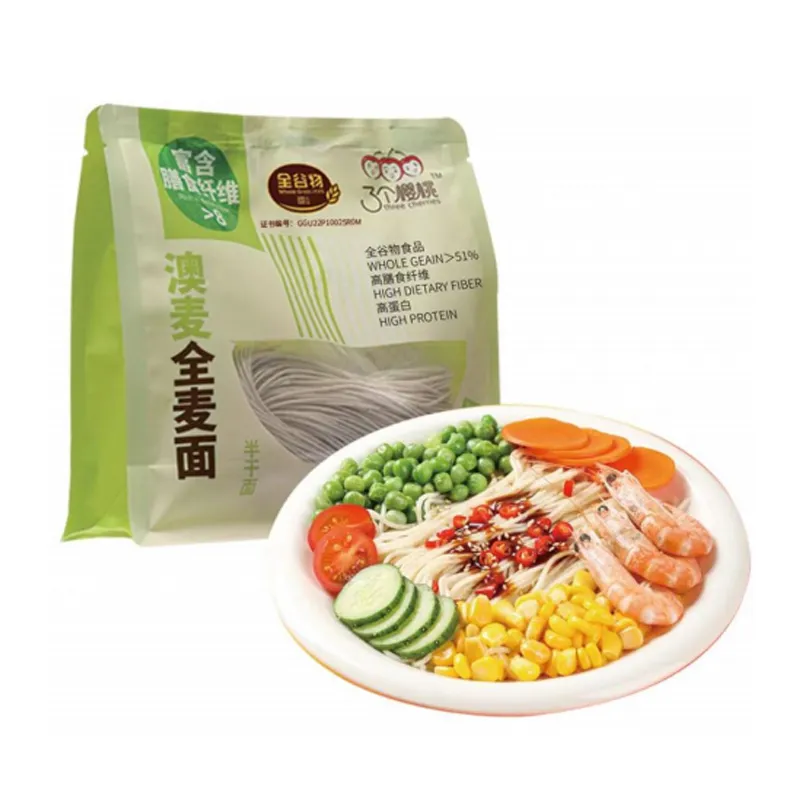xinjiang fried noodle
The Allure of Xinjiang Fried Noodles A Culinary Journey
Nestled in the heart of Central Asia, Xinjiang boasts a rich tapestry of culture and cuisine, significantly influenced by its diverse ethnic groups. Among its many culinary treasures, Xinjiang fried noodles stand out as a beloved dish that captures the essence of the region's vibrant flavors and textures. This article will take you on a delightful journey through the history, preparation, and cultural significance of this remarkable dish.
A Flavorful History
Xinjiang, home to the Uyghur people and several other ethnic groups, has been a crossroad for traders and travelers for centuries. The Silk Road, which traversed this vast region, brought not only goods but also a mélange of culinary traditions. The fusion of Central Asian and Chinese flavors can be seen in many dishes, but Xinjiang fried noodles—locally known as chao mian—represent a unique blend worthy of exploration.
Traditionally, these noodles are hand-pulled, a skill that seeks both art and practice. This method gives the noodles a chewy texture and allows them to absorb flavors beautifully. In addition to wheat, which is the primary ingredient used in most noodle dishes across China, Xinjiang's geographical diversity has also contributed to varied local ingredients, such as lamb, fresh vegetables, and an array of spices.
The Allure of Xinjiang Fried Noodles A Culinary Journey
The process of making Xinjiang fried noodles is as intricate as it is rewarding. It begins with dough made from high-quality flour mixed with water and a pinch of salt. After the dough is kneaded and rested, it is stretched by hand until it reaches the desired thickness. This technique allows for the characteristic chewiness that distinguishes Xinjiang noodles from other varieties.
xinjiang fried noodle

Once the noodles are ready, the cooking process commences. They are boiled briefly until they achieve a perfect al dente consistency, then quickly tossed in a hot wok with a mix of vegetables and protein. Common ingredients include bell peppers, onions, carrots, and tender cuts of lamb or chicken, often marinated in fragrant spices such as cumin and chili powder. The vegetables are stir-fried at high heat to retain their crispiness, while the meat is seared to perfection, creating a delightful contrast of textures.
One of the key elements that elevate Xinjiang fried noodles is the sauce—typically a savory blend of soy sauce and additional spices that enhance the overall dish. A sprinkle of fresh herbs, such as cilantro or green onions, brightens the flavor profile and adds a burst of color, making the dish not only a feast for the palate but also a treat for the eyes.
Cultural Significance
Xinjiang fried noodles are more than just a meal; they are a symbol of the region's hospitality and communal eating culture. In Uyghur society, sharing food with family and friends is a cherished tradition that reflects values of unity and generosity. Whether enjoyed at a bustling street stall or as part of a celebratory feast, these noodles embody the spirit of togetherness.
In recent years, Xinjiang fried noodles have gained popularity beyond their geographic confines, appealing to food enthusiasts looking for authentic culinary experiences. Many restaurants around the world now offer this dish, introducing diners to the rich flavors of Xinjiang cuisine, complete with its aromatic spices and hearty ingredients.
Conclusion
Xinjiang fried noodles serve as a delicious snapshot of the rich cultural heritage of the Xinjiang Uyghur Autonomous Region. Through their unique preparation, diverse ingredients, and cultural significance, they invite diners to explore the history and traditions of a region steeped in flavor. Whether you are lucky enough to enjoy them in Xinjiang or sampling them at a local eatery in your city, these noodles are sure to leave a lasting impression, reminding us of the power of food to bring people together and celebrate cultural diversity.
-
Unleash Your Inner Chef with Delectable Italian Pasta CreationsNewsAug.01,2025
-
Savor Health and Flavor: Irresistible Soba Noodles for Sale Await!NewsAug.01,2025
-
Nourish Your Body with Premium Organic Ramen - A Culinary Delight AwaitsNewsAug.01,2025
-
Elevate Your Dishes with Our Exquisite Kinds of Egg NoodlesNewsAug.01,2025
-
Dive into Flavorful Convenience with Our Ramen OfferingsNewsAug.01,2025
-
Discover Exquisite Types of Naengmyeon and Chilled Soba NoodlesNewsAug.01,2025
-
Is Whole Wheat Pasta Healthy?NewsMay.30,2025
Browse qua the following product new the we

















































































































